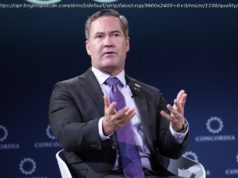Trump promised to bring the 2,000 U. S. Special Forces home from Syria in April. When his announcement sparked opposition from the Pentagon and…
Trump promised to bring the 2,000 U. S. Special Forces home from Syria in April. When his announcement sparked opposition from the Pentagon and from key allies, Trump said that he would give the Pentagon six months to complete its mission to defeat so-called “Islamic State” (ISIS) forces in Syria.
Seven months later, he announced the troops will be coming home.
Trump’s decision will have negative consequences. But it will also have positive consequences. Only time will tell if the positive implications of the move will outweigh the negative ones. But it is important to set out both to consider the wisdom of his decision.
On the negative side, the most immediate casualties of Trump’s decision are the Kurdish-dominated People’s Protection Units (YPG) militia. The YPG has been America’s partner and its ground force in the U. S.-led campaign against IS in Syria. YPG forces are the only forces on the ground in Syria that are loyal to the U. S.
At the same time, the U. S. partnership with the YPG has raised the prospect of a war between the U. S. and Turkey. Turkish dictator Recip Erdogan. Erdogan threatened l ast week to launch an offensive against the YPG forces. He spoke to Trump on Monday. Trump reportedly decided to announce the withdrawal of U. S. forces from Syria on Tuesday.
Also during the course of their discussion, Erdogan reportedly agreed to cancel his order of the Russian S-400 surface-to-air missile system and to purchase a package of U. S. Patriot missile systems valued at $3.5 billion instead.
Turkey’s planned purchase of the S-400 caused a rift between NATO member Turkey and NATO. The S-400 is not interoperational with NATO systems. Turkish use of the system could endanger the American F-35’s stealth systems.
In announcing the departure of U. S. forces, Trump essentially told the Kurds that they are on their own. Unless the U. S. agrees to arm and supply YPG forces, and unless the U. S. intends to use other means to deter Erdogan from attacking them, Syria’s Kurds will face the unenviable choice between facing the Turks alone or throwing their hats in with the Russians and Iranians in the hopes of receiving some sort of protection from the Turks.
Despite their relatively small numbers, the U. S. forces in Syria have had a massive strategic impact on the power balance in the country. Deployed along the border triangle joining Syria, Iraq and Jordan, the U. S. forces in Syria have blocked Iran taking over the Iraqi-Syria border and so forging a land bridge linking Iran to the Mediterranean through Iraq, Syria and Lebanon.
U. S. forces at the border have also prevented Iranian-controlled forces from attacking Jordan.
Then there is Russia. Last January, Russian President Vladimir Putin and Syrian President Bashar Assad concluded a deal that gave Russia control over Syria’s oil and gas. The following month, Russian mercenaries attempted to cross the Euphrates River to seize the Conoco oil field. The area is under YPG control. Forty U. S. forces blocked the Russian offensive. Hundreds of Russian mercenaries were killed.
Last month, the U. S. Treasury sanctioned an Iranian-Russia network that sent millions of barrels of Iranian oil to Syria and hundreds of millions of dollars to Hamas and Hezbollah. The purpose of the network was to permit Iran to bypass the U. S. sanctions by passing its oil off as Syrian oil.
Apparently in response to America’s move, Russia’s largest oil company Rosneft cancelled a $30 billion deal to develop oil and gas projects in Iran. And so on the face of it, the withdrawal of U. S. forces from Syria gives Russia and Iran an open road to bypass U.






